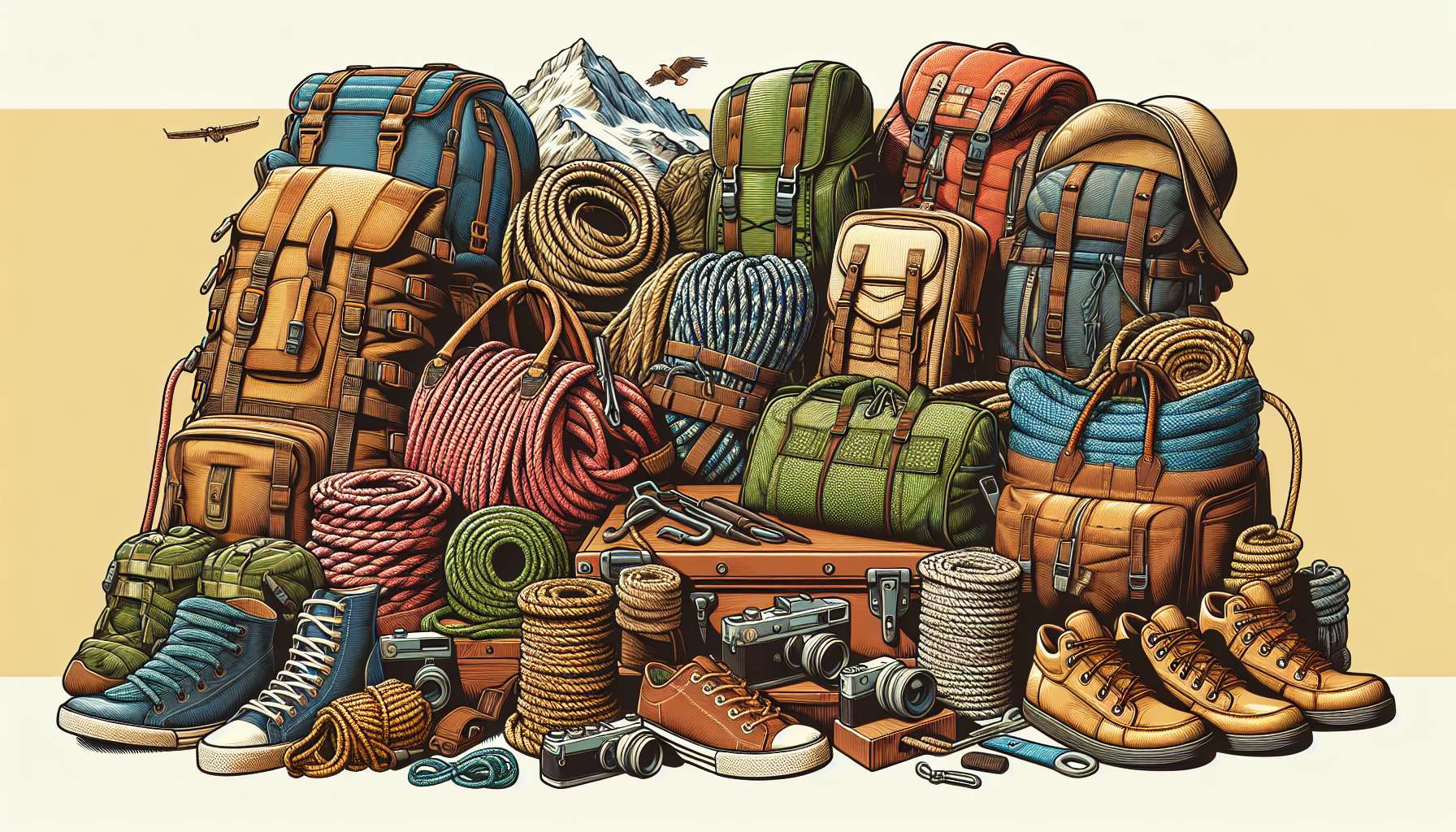Rope Bags: A Comprehensive Guide
When it comes to outdoor activities, having the right gear can make all the difference. One essential piece of equipment that often goes overlooked is the humble rope bag. While it may seem like a simple accessory, rope bags play a crucial role in keeping your climbing or rigging ropes organized, protected, and easily transportable. In this detailed guide, we will explore the world of rope bags, from their history and design to their practical applications and future developments.
The History of Rope Bags
Rope bags have been around for centuries, evolving from simple pouches to sophisticated storage solutions. In ancient times, ropes were coiled and carried in baskets or bundles made from natural fibers. As technology advanced, so did the design of rope bags. In the 19th century, canvas and leather became popular materials for rope bags, offering durability and protection for the ropes inside.
Today, rope bags come in a variety of materials, sizes, and configurations to suit different activities and preferences. From rock climbing to sailing to industrial rigging, rope bags have become an essential accessory for anyone working with ropes.
The Design of Rope Bags
Rope bags are designed with functionality and convenience in mind. Most rope bags feature a durable outer shell, often made of nylon or canvas, to protect the rope from abrasion, dirt, and moisture. The interior of the bag is lined with a smooth material, such as fleece or nylon, to prevent tangling and ensure easy rope retrieval.
Many rope bags also come with built-in organization features, such as pockets, loops, and compartments, to keep gear like carabiners, belay devices, and gloves neatly stored alongside the rope. Some advanced rope bags even have integrated tarp systems for easy rope deployment and clean storage.
Practical Applications of Rope Bags
Rope bags are used in a wide range of activities, from recreational climbing to professional rigging. In rock climbing, a rope bag is essential for safely storing and carrying the climbing rope to the crag. The bag not only protects the rope from dirt and sharp edges but also makes it easier to transport between climbing routes.
In sailing, rope bags are used to store and organize the various lines and ropes used on a boat. By keeping the ropes neatly coiled and protected in a dedicated bag, sailors can quickly access the right line when needed, reducing the risk of tangles and knots.
In industrial settings, rope bags are essential for rigging operations, where multiple ropes of varying lengths and thicknesses are used. A well-designed rope bag can streamline the rigging process, making it faster and safer for workers to set up and dismantle complex systems.
The Future of Rope Bags
As technology continues to advance, so too will the design and functionality of rope bags. We can expect to see innovative features such as smart sensors that monitor rope tension and wear, integrated GPS tracking for easy location of lost ropes, and lightweight, eco-friendly materials that reduce the environmental impact of rope manufacturing.
Rope bags may also become more customizable, allowing users to adjust the size, shape, and configuration of the bag to suit their specific needs. With 3D printing technology on the rise, we may even see a future where rope bags are fully customized to fit each individual rope perfectly.
Expert Opinions
According to renowned rock climber Alex Honnold, “A good rope bag is like a second skin for your rope. It not only protects the rope from damage but also makes it easier to handle and transport, allowing you to focus on the climb ahead.”
Industrial safety expert Dr. Sarah Johnson adds, “Rope bags are a crucial part of any rigging operation, helping to ensure the safety and efficiency of the work. By investing in high-quality rope bags, companies can reduce the risk of accidents and improve overall productivity.”
Common Misconceptions
One common misconception about rope bags is that they are only necessary for professional climbers or riggers. In reality, rope bags are useful for anyone who works with ropes, from weekend warriors to seasoned professionals. By investing in a quality rope bag, you can prolong the life of your ropes and make your activities more enjoyable and efficient.
Conclusion
To wrap things up, rope bags are a versatile and essential accessory for anyone working with ropes. Whether you are a rock climber, sailor, or industrial rigger, a good rope bag can help you stay organized, protect your gear, and streamline your workflow. By understanding the history, design, and practical applications of rope bags, you can make an informed choice when selecting the right bag for your needs. So next time you head out on an adventure, don’t forget to pack your rope bagit just might make all the difference.




